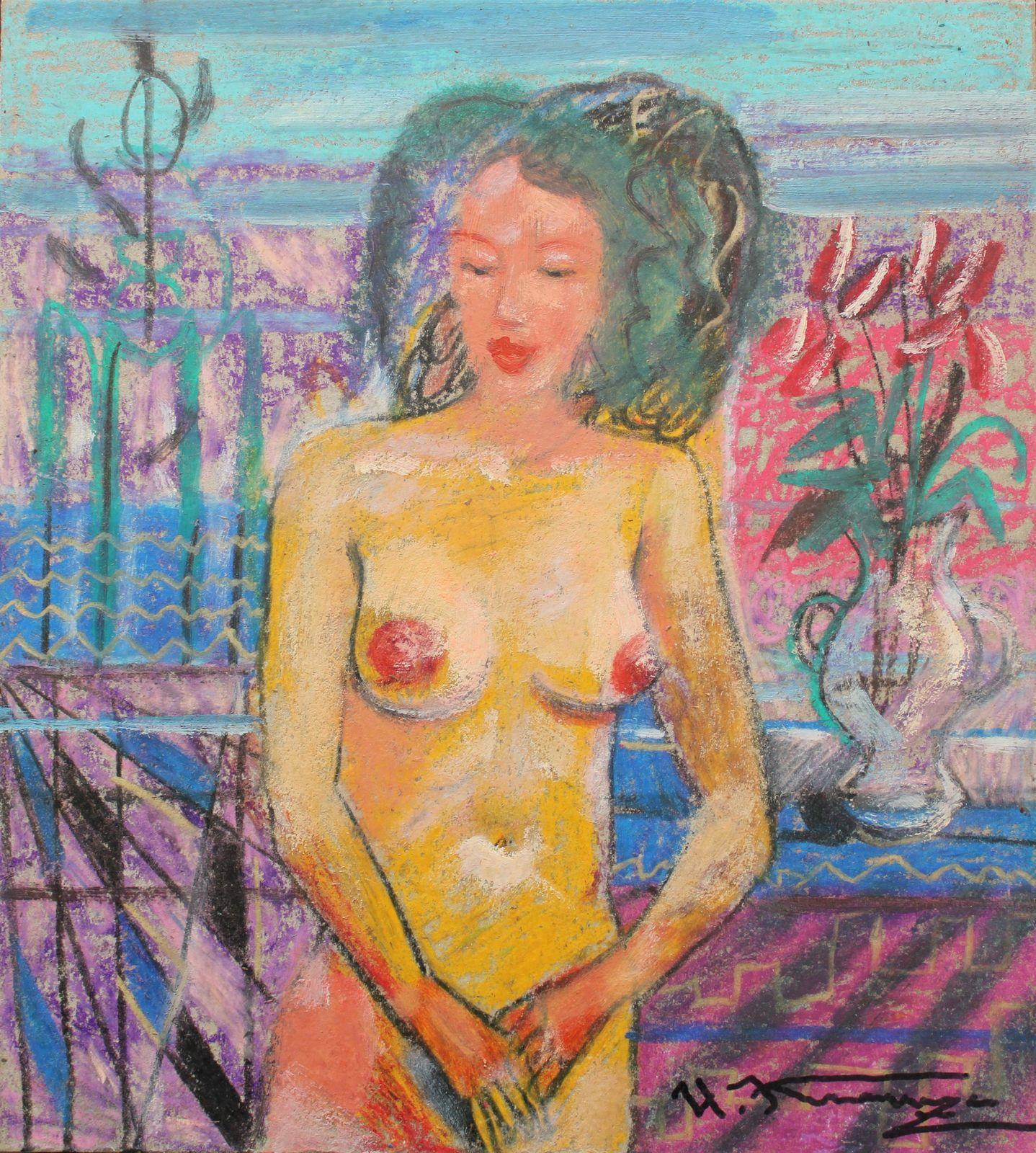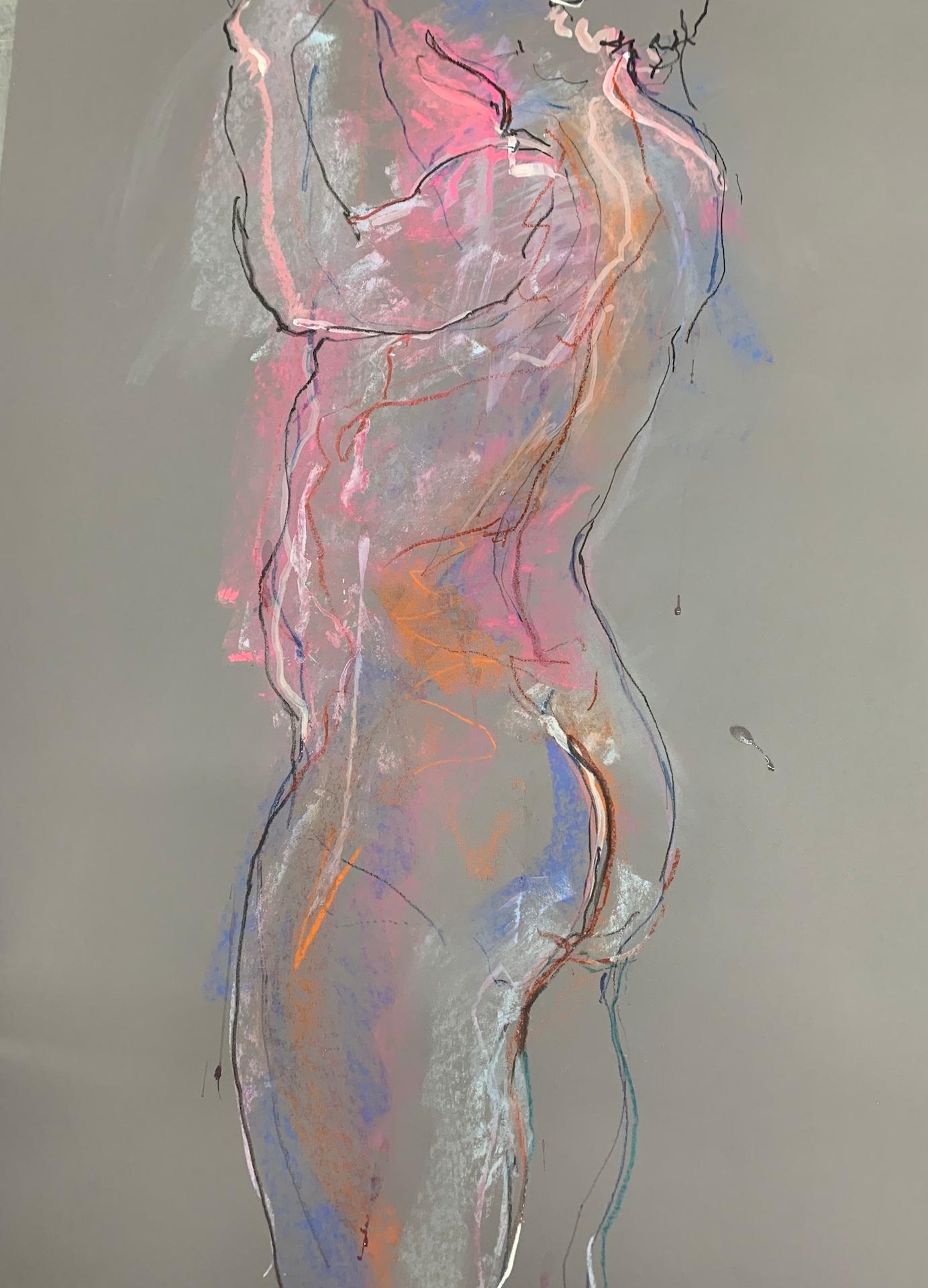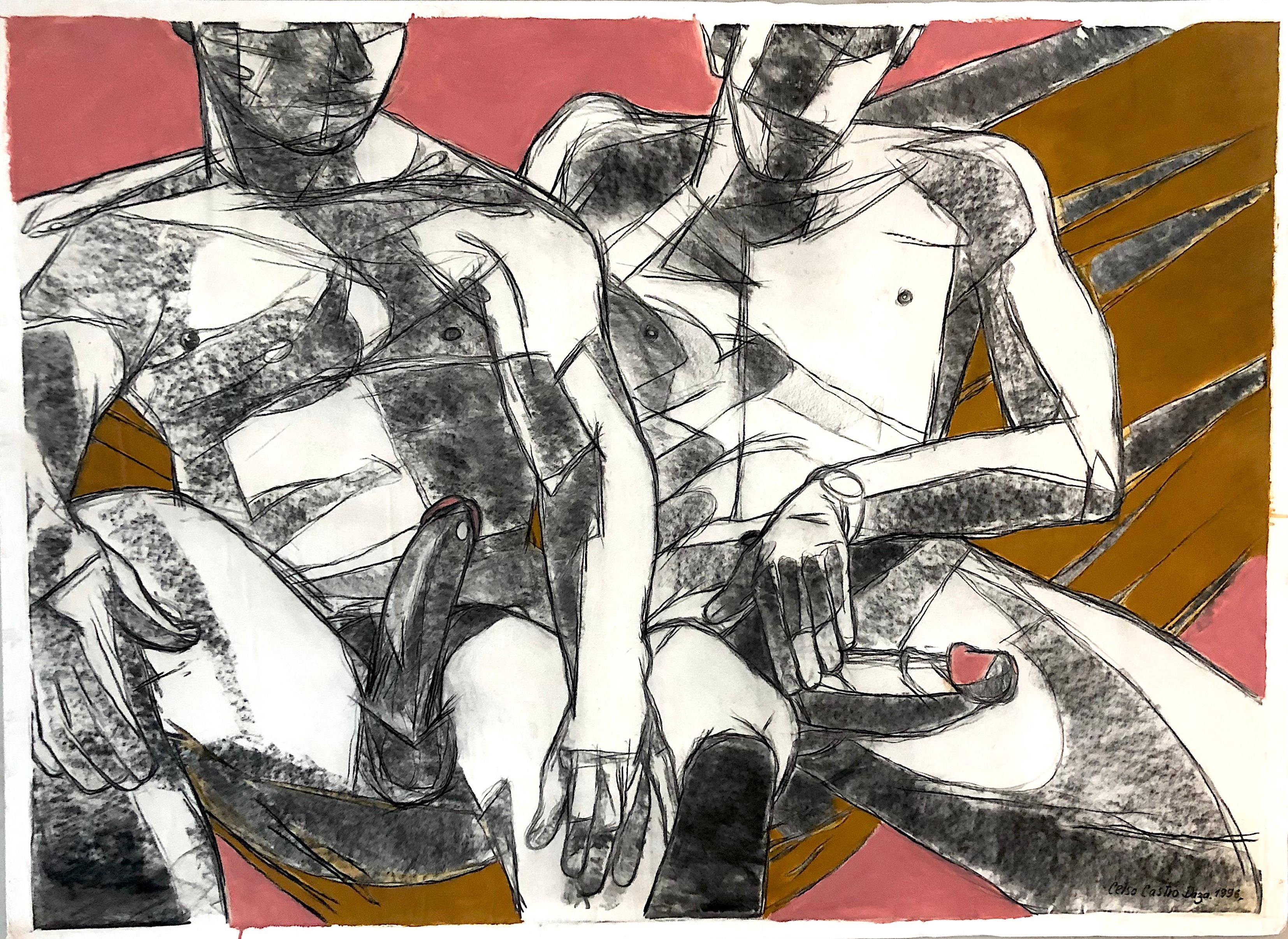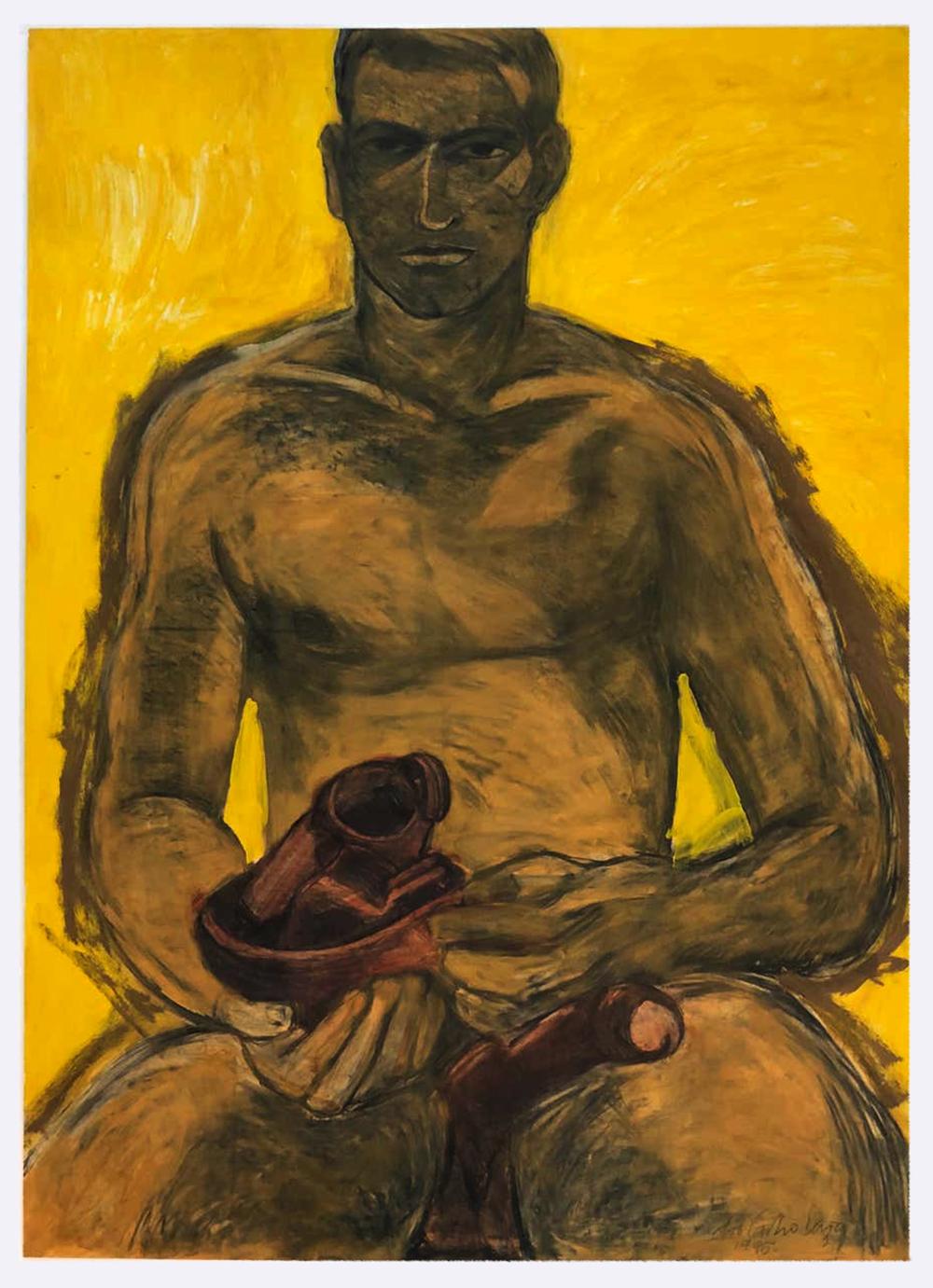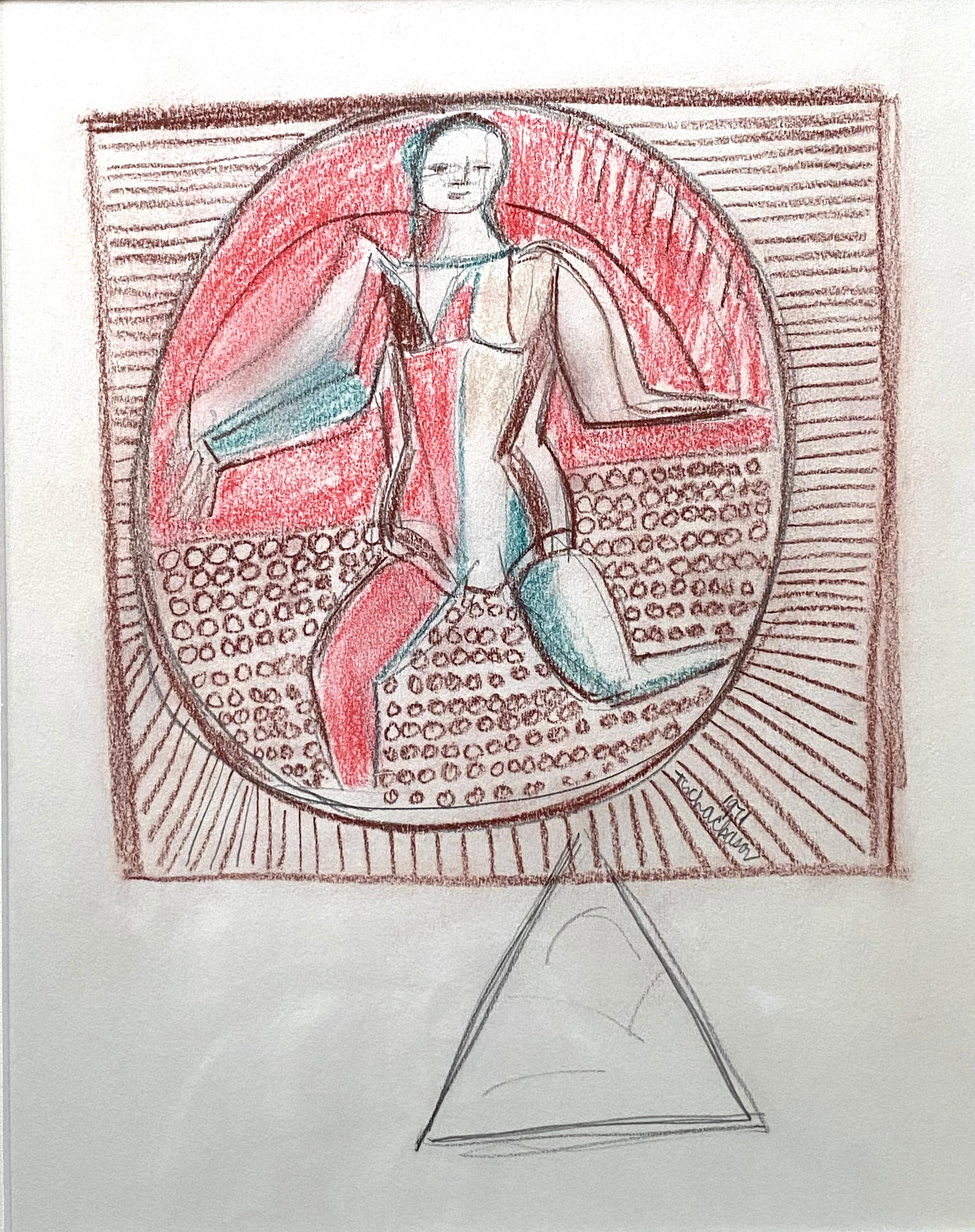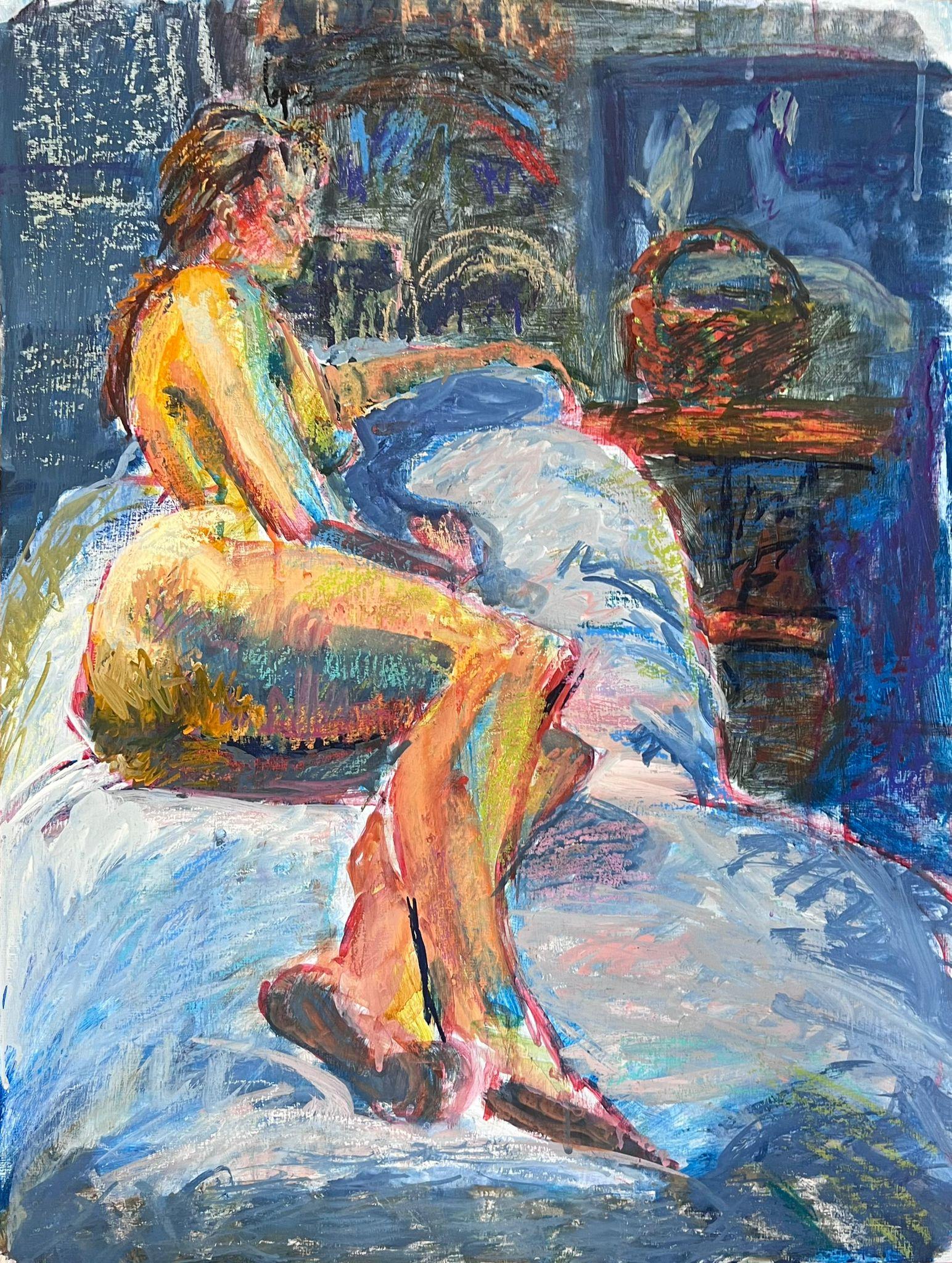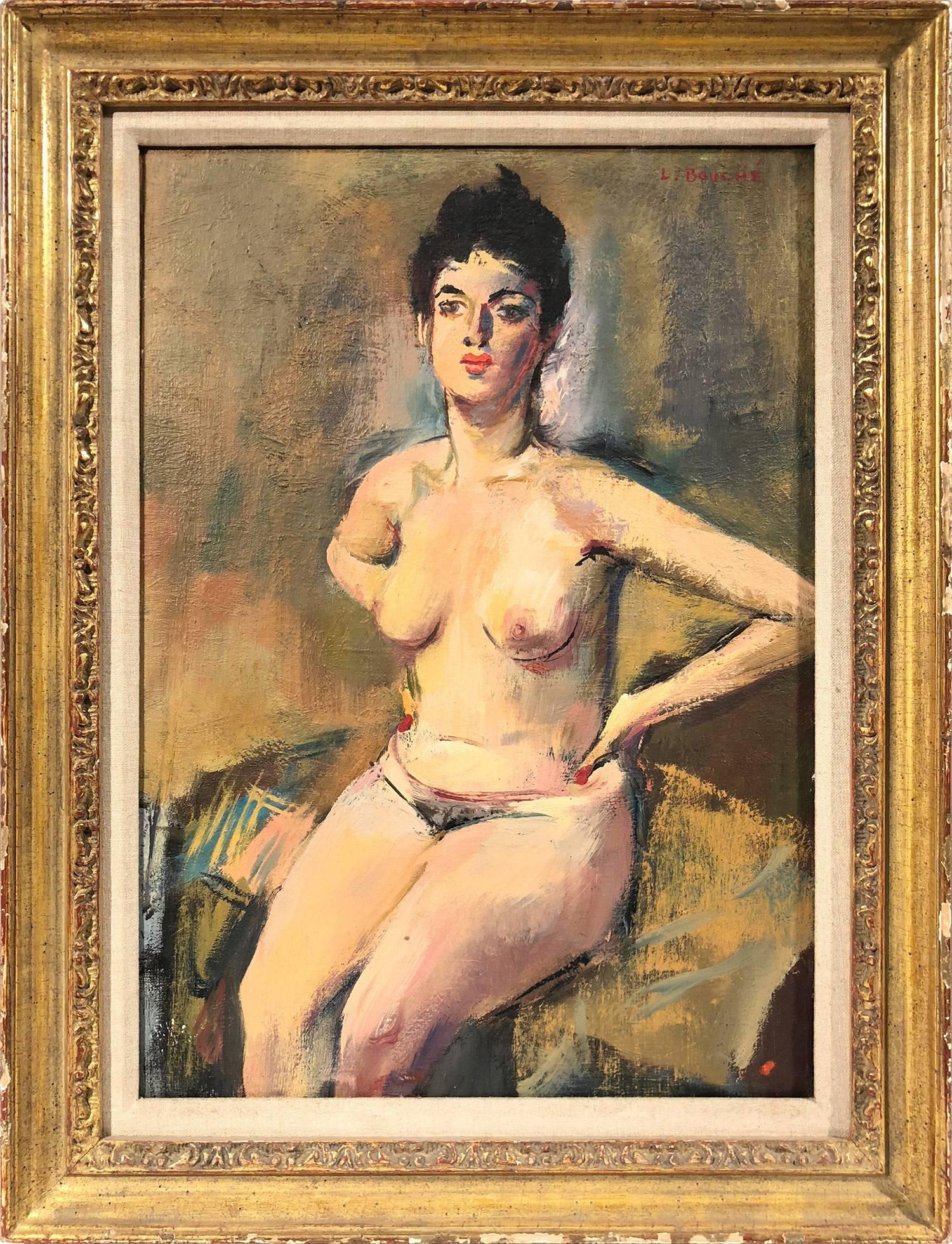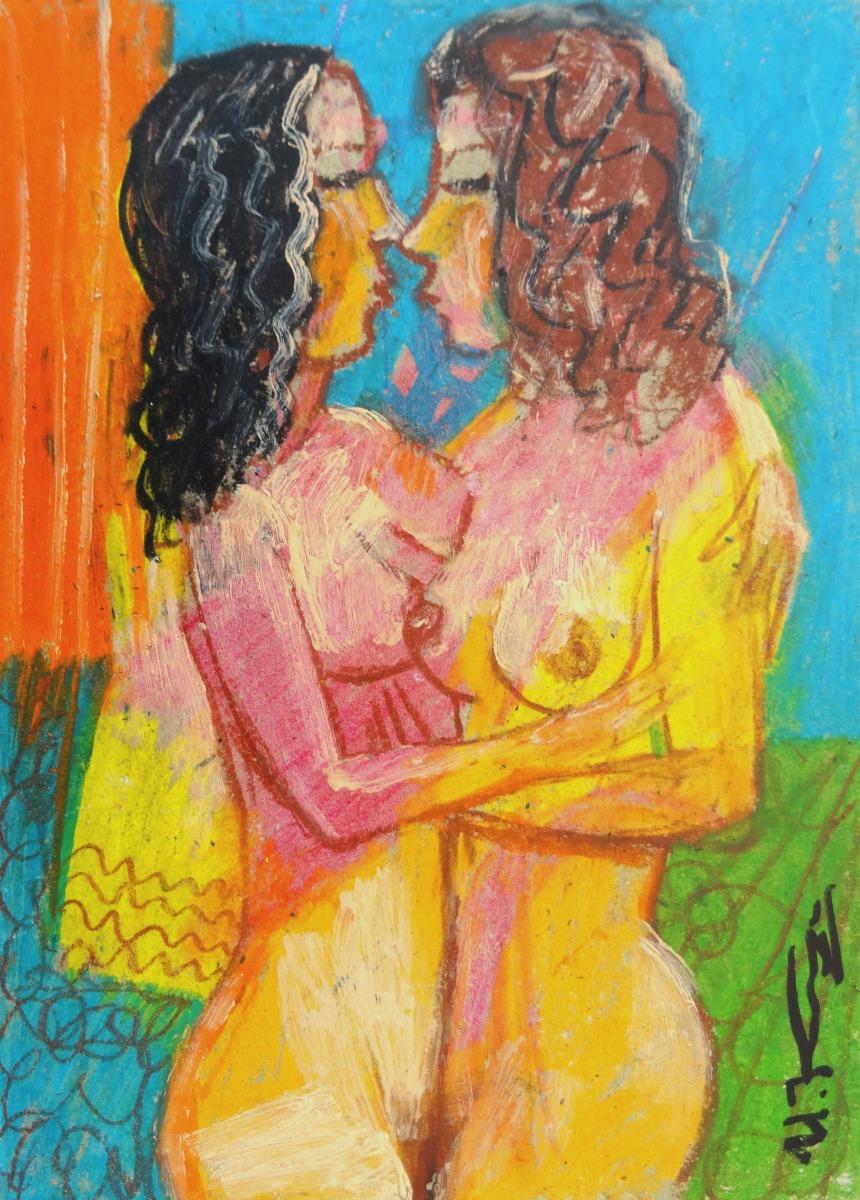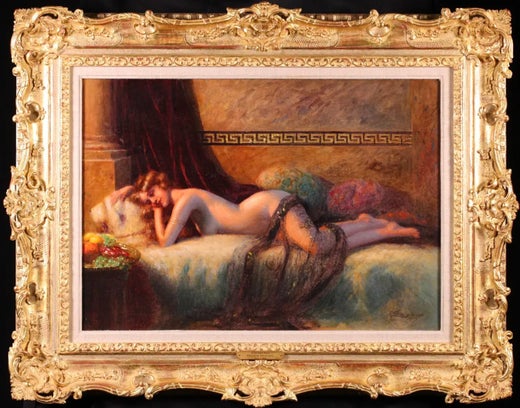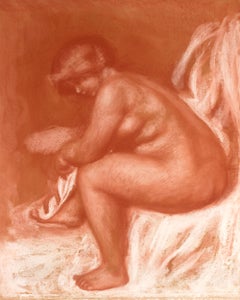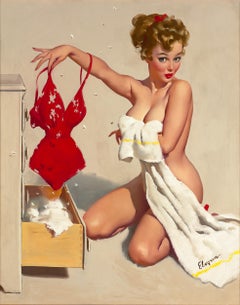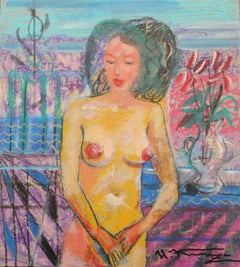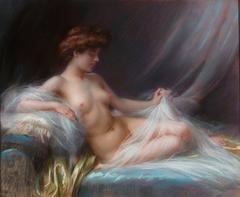
Reclining Female Nude
Delphin Enjolras Reclining Female Nude Early 20th Century
Early 20th Century
About the Item
- Creator:Delphin Enjolras (1857-1945, French)
- Creation Year:Early 20th Century
- Dimensions:Height: 29.75 in (75.57 cm)Width: 35 in (88.9 cm)Depth: 3.5 in (8.89 cm)
- Medium:
- Movement & Style:
- Period:
- Condition:
- Gallery Location:New Orleans, LA
- Reference Number:Seller: 30-49571stDibs: LU1861587183
Delphin Enjolras
Delphin Enjolras was born in France in 1857. He began his studies at the École de Dessin de la Ville de Paris, focusing primarily on watercolors. Enjolras soon moved on to study at the École des Beaux-Arts, learning from masters including the Academic great Jean-Léon Gérôme. Landscapes were his primary focus in his early career, though it became clear that painting women was where his true talent showed the brightest. Enjolras became a celebrated painter of nudes, and his later work became imbued with a stunning sensuality. Beginning in 1890, he frequently exhibited at the Paris Salon, and he joined the Société des Artistes Français in 1901. Enjolras's works are highly exhibited throughout France, including significant collections of his work at the Musée du Puy and the Musée d’Avignon.
- Après le bain (After the bath)By Pierre Auguste RenoirLocated in New Orleans, LAFor Pierre-Auguste Renoir, Impressionism's pre-eminent figure painter, depicting the nude was an exercise in bringing the canvas to life. He once said, “I look at a nude, I see myriads of minuscule shades. I have to find those which will make the flesh on my canvas come to life and resonate.” This compelling portrait by Renoir entitled Après le bain presents the nude figure of a woman in a serene, private moment, absorbed in the task of drying herself after a bath. The artist’s mastery of light and shading is incredible, achieving a sense of vitality in this otherwise ordinary scene. Renoir is celebrated for his figural work, especially his Rubenesque female nudes, however, it was not until the artist was in his forties that he depicted the nude with any frequency. In 1881, Renoir traveled to Italy, where he studied the works of the Renaissance masters and the ancient art of Pompeii and Rome. Upon his return to France, the nude became his favored subject, and he used the motif to combine the spontaneity of Impressionism with the solid modeling of classical painting. Renoir’s medium here, sanguine, a reddish-brown chalk, was used extensively in the Renaissance by Leonardo (who employed it in his sketches for the Last Supper), Michelangelo and Raphael. Its warm hue lends itself well to depicting flesh, and the chalk drawing allows for a greater focus on line, form and texture in a departure from the aspects of color and light that so often preoccupied the Impressionists. Après le bain conveys the impression of arrested motion with perfect naturalness, deftly capturing the moment before the elegant lines of the sitter's form change position. The sitter is almost certainly Gabrielle Renard, the nanny to Renoir’s children and a frequent model for the artist. Gabrielle was the cousin of Renoir’s wife, Aline, and came to Montmartre to work for the family at the age of 16. She developed a strong bond with the family and became a favorite subject for Renoir, appearing in several of his most important works, including his 1911 Gabrielle with a Rose (Musée d'Orsay). When Renoir began to suffer from severe rheumatoid arthritis that would eventually leave him unable to walk and scarcely able to grasp a paintbrush, it was Gabrielle that would assist the artist by positioning the paintbrush between his crippled fingers. Born in Limoges, France in 1841, Renoir began his career as an apprentice to a painter of porcelain wares. He later moved to Paris at the age of 21, enrolling at the prestigious École des Beaux-Arts. It was here, while studying under Charles Gleyre, that Renoir attained a tremendous appreciation for the academic style of painting, a quality that would last throughout his career. This was also when he met Claude Monet and several other classmates, with whom he would later form the Impressionists. Working closely with Monet, Renoir began experimenting with the portrayal of light and its effect on his canvases. The youngest member of the Impressionist movement, an astute Renoir recognized how a subject was constantly changing due to the dynamic effects of light on color. Relying heavily upon his academic training that focused on composition, lines and descriptive details, Renoir distinguished himself among his contemporaries. His intuitive use of color and expansive brushstroke, along with acute attention to his subject, have placed him among the finest painters in history. This work is accompanied by a certificate of authenticity and will be included in the forthcoming catalogue raisonné of the work of Pierre-Auguste Renoir from the Wildenstein Plattner Institute. Circa 1898 Canvas: 43 1/2" high x 35 1/2" wide Frame: 57 3/4" high x 49 1/4" wide Provenance: Galerie Durand-Ruel, Paris (acquired from the artist on January 25, 1899) J. Pereire Collection, France (1966) Sam Salz, New York (before 1981) Claus Virch, Paris French Compagny, Inc., New York Larry Silverstein, New York (circa January 1987) Le Clos de Sierne Gallery, Geneva Galerie Heyram, Paris (October 1987) Francis Gross M.S. Rau, New Orleans Literature: B. Schneider, Renoir, Berlin, 1957, p. 95 (illustrated in color, p. 83) M. Gauthier, Renoir, Paris, 1958, p. 83 (illustrated in color; erroneously dated '1916' and titled 'Woman in her toilet') F. Fosca, Renoir, L'homme et son obra, Paris, 1961, p. 280 (illustrated, p. 95; erroneously dated 'about 1890' and titled 'After the Bath...Category
19th Century Impressionist Nude Paintings
MaterialsCanvas, Paper, Chalk
Price Upon Request - Partial Coverage By Gil ElvgrenBy Gil ElvgrenLocated in New Orleans, LAGil Elvgren 1914-1980 American Partial Coverage Signed “Elvgren” (lower right) Oil on canvas The iconic illustrations of Gil Elvgren have become an irreplaceable facet of the American artistic landscape. Flirtatious beauties in light-hearted situations were the dominant subject matter for this intuitive artist, whose eloquent brush strokes dutifully captured the innocent sensuality of the mischievous girl next door. Partial Coverage, originally published in the 1956 Brown & Bigelow calendar, epitomizes the coquettish spirit of his beauties, whose nostalgic glamor give us a glimpse into a simpler time in American history. Elvgren is considered to be the greatest American pin-up and glamor artist. The majority of his work was done for the famed Brown & Bigelow, though at various points in his career he also worked for magazines such as The Saturday Evening Post and Good Housekeeping, as well as large corporations including Sealy Mattresses, General Electric and Coca-Cola. Born in St. Paul, Minnesota, Elvgren began his artistic education at the Minneapolis Art Institute, and later the American Academy of Art. His first job upon graduation was at the Chicago advertising firm of Stevens and Gross, working directly under Haddon Sundblom, famous for his Coca-Cola Santas. Elvgren would soon become his star pupil, contributing much to the Coca-Cola campaigns and eagerly learning techniques that he would carry into his famed pin-ups. After completing several special commissions with rave reviews, Elvgreen began doing pin-up work in 1937 for the Louis F. Dow Calendar Company, the biggest retailer of calendars of its day. Almost overnight, the artist became one of the most respected and successful commercial artists of his generation. More commissions followed, and, along with his work for Dow, Elvgren found himself booked solid at least one year ahead of his output. It was in 1944 that Brown & Bigelow approached him with an offer for a staff position. From that point on, for the next 30 years, Elvgren enjoyed tremendous commercial success unlike any other American artist of his day. Circa 1956 Canvas: 30 1/8“ high x 24 1/8” wide Frame: 33 3/4“ high x 27 7/8” wide x 1 1/2“ deep Literature: Charles G. Martignette and Louis K...Category
20th Century Figurative Paintings
MaterialsCanvas, Oil
- Italian Panel with Satyr and NymphsLocated in New Orleans, LAThis extraordinary Italian gouache and oil on canvas brings two of the most popular characters from Greek mythology vividly the life - the nymph and the satyr. Both creatures are famed for their carefree natures and lascivious temperaments, and tales abound of satyrs pursing nubile nymphs in order to rape or seduce them, usually with little success. One such narrative humorously unfolds in the present piece, which depicts an indignant satyr captured by three nymphs with a golden net. The relationship between these two mythological creatures was a popular one for artists throughout the 18th and 19th centuries, though its origins stretch back to antiquity. Both satyrs and nymphs...Category
Early 19th Century Other Art Style Figurative Paintings
MaterialsCanvas, Oil, Gouache
Price Upon Request - Baigneuses (Bathers)By Louis-Joseph CourtatLocated in New Orleans, LAFrench Academic painter Louis-Joseph Courtat displays his mastery of composition and the female form in this entrancing oil on canvas. Entitled Baigneuses, the work was painted for and exhibited at the 1885 Paris Salon, the foremost exhibition of painters in the Western world. Large in size, it captures two nude bathers within a tranquil beach scene. While the artist's skill for landscape painting is on display, it is his command of form, light and color that bring this canvas to life. The artist specialized in paintings that glorified the nude, and his skill is clear in the luminosity of his models' skin and the classical beauty of their form and proportions. With their soft, undulating curves and flowing hair, Courtat's models reflect the two key influences on the young painter, that of the great Jean-Auguste-Dominique Ingres as well as his teacher Alexandre Cabanel. Like these two greats who came before him, Courtat similarly follows in the artistic tradition of the female nude that is traceable to classical antiquity and the Italian Renaissance. Born in Paris in 1847, Courtat studied at the famed École des Beaux-Arts under Cabanel. He was one of the Academic master's first students at the school, where he began to teach in 1864. Displaying considerable skill at an early age, Courtat won the Prix de Rome around 1870, and subsequently studied in Rome for a number of years. He returned to Paris in 1873 to make his debut at the Salon, where he was met with immediate success, receiving a third class medal. He received medals again in 1874 and 1875, a remarkable achievement for a painter of his age. In addition to the monumental nudes...Category
19th Century Academic Nude Paintings
MaterialsCanvas, Oil
Price Upon Request - Le carnaval du sage by René MagritteBy René MagritteLocated in New Orleans, LARené Magritte 1898-1967 Belgian Le carnaval du sage (The Sage’s Carnival) Signed “Magritte” (lower right); titled and dated "Le carnaval du sage 1947" (en verso) Oil on canvas The enigmatic paintings of René Magritte have become some of the most familiar and celebrated of the Surrealist movement. Among the most influential of the Surrealist painters of the 20th century, Magritte is an artist of international renown, as beloved for his popular appeal as he is for the psychological intensity of his works. The present oil on canvas, entitled Le carnaval du sage, was executed in 1947 at the height of his career, and it is a tour-de-force example of the haunting, mysterious scenes that comprise his oeuvre. Painted in the years following the Second World War, Le carnaval du sage showcases several recurring themes from Magritte’s oeuvre. Chiefly, a juxtaposition between the visible and the hidden is keenly felt. Throughout his career, Magritte explores the psychological obsession with revealing what is hidden, particularly with regard to the human face. In his Le fils de l’homme, he obscures the face of a man in a bowler hat with an apple, while his Les amants (Metropolitan Museum of Art) conceals the faces of two lovers with white sheets. In Le carnaval du sage, Magritte juxtaposes the blatant nudity of his central figure by masking her face, simultaneously revealing and concealing her from the viewer. The work also incorporates two of Magritte’s most common tropes – the glass of water and the baguette. Lending the scene a strange sense of domesticity, they appear infinitely familiar and distinctly out of place, and thus heighten the uncanny effect of Magritte’s composition. In the background hovers a ghost obscured by a sheet, a figure which was of particular fascination to Magritte beginning in 1946. He once wrote to his fellow Surrealist Paul Nougé: "I saw in a dream an answer to the problem of the ghost: the traditional ghost draped...Category
20th Century Post-Impressionist Nude Paintings
MaterialsCanvas, Oil
Price Upon Request - The Education of Achilles by Auguste-Clément ChrétienBy Auguste-Clément ChrétienLocated in New Orleans, LAThe Education of Achilles by the Centaur Chiron Signed and dated "A.C. Chrétien 1861" (lower right) Oil on canvas A masterpiece of French N...Category
19th Century Academic Nude Paintings
MaterialsOil
- Shyness. Cardboard, author`s technique, 31x28 cmLocated in Riga, LVShyness Cardboard, author`s technique, 31x28 cmCategory
Early 2000s Impressionist Nude Paintings
MaterialsCardboard, Oil, Mixed Media, Pastel
- Indian Nude Woman in Green Saree, Pastel on Board, Master Indian Artist"In Stock"By Prokash KarmakarLocated in Kolkata, West BengalPrakash Karmakar - Untitled - 29 x 19 inches ( unframed size ) Pastel on Board Inclusive of shipment in roll form. This Painting of a Blatantly Nude and Somewhat Sensous Woman wra...Category
1990s Modern Nude Paintings
MaterialsPastel, Oil Pastel, Board
- Alberto Standing 1 Judith Brenner, Sketch Painting, Original Contemporary ArtBy Judith BrennerLocated in Deddington, GBJudith Brenner Alberto Standing 1 Original Figurative Painting Mixed Media on Paper Size: H 84.1cm x W 59.4cm x D 0.1cm Sold Unframed Please note that insitu images are purely an ind...Category
21st Century and Contemporary Aesthetic Movement Figurative Paintings
MaterialsPaper, Oil Pastel, Ink, Acrylic, Watercolor
- Two male Nudes. Painting.Pastel, carbon pencil, ink on archival paper mountedBy Celso José Castro DazaLocated in Miami Beach, FLTwo Nudes, 2016 by Celso Castro-Daza One of a kind Pastel, carbon pencil, ink on archival paper mounted on board Image size: 40.5 H in. x 55.5 in. W Mounted on acid-free board: 41 H x 56 in. W Drawing on paper is his basic work tool, some are sketches of his surviving works, others are sketches of moments he documents. ____________ Undefined by medium, Celso Castro’s works each carry the presence of the artist’s hand through the transparency of their process. Castro’s oeuvre is strongly divided between his photomontage assemblies and watercolor paintings: the prior is marked by the labor-intensive deconstruction of portrait photographs and the latter, by the seemingly frenzied recreation of a past encounter rendered in the drips and scribbles of paint and ink. Both discriminating in what they reveal of the subject, his photomontage and watercolor portraits exude raw sexuality through the combination of Castro’s mark-making and gaze. Celso Castro’s work is a bare-bulb erotic photo foray into the underbelly of Colombia’s drug world. Castro’s labor-intensive, photo-collage works of drug kingpins, smugglers, hitmen, countrymen, street vendors, soldiers, paramilitaries, kidnappers, and pimps pose showing with pride their erect penises...Category
2010s Contemporary Nude Paintings
MaterialsArchival Ink, Archival Paper, Carbon Pencil, Oil Pastel
- Yellow Nude. Portrait. Painting Pastel, pencil, ink on archival paper mountedBy Celso José Castro DazaLocated in Miami Beach, FLYellow Nudes, 2016 by Celso Castro-Daza One of a kind Pastel, carbon pencil, ink on archival paper mounted on board Image size: 52.5 H in. x 37.8 in. W M...Category
2010s Contemporary Nude Paintings
MaterialsArchival Ink, Oil Pastel, Archival Paper, Carbon Pencil
- “Balancing Act”By Nahum TschacbasovLocated in Southampton, NYOriginal oil pastel with underlying graphite drawing lines by the well known Russian/American artist Nahum Tschacbasov. Signed and dated by the artist lower right, 1971. Condition is excellent. Provenance: Estate of the artist, Nahum Tschacbasov. Overall matted and in a contemporary narrow blond maple frame 17.5 by 15 inches. Nahum Tschacbasov Biography : Russian-American artist Nahum Tschacbasov (1899-1984) is known for his cubo-surrealistic works which feature a strong psychological element. Some of his work bears a resemblance to work of another Russian-American artist--David Burliuk. He was somewhat of a late starter, moving to Paris in 1932 to study under Adolph Gottlieb, Marcel Gromaire and Fernand Leger. He had his first exhibition in Paris in 1934. He then returned to the US where he joined Rothko and Gottlieb at the Galery Seccession. He was one of the co-founders of The Ten, a group of social conscious abstract painters which included Rothko, Gottlieb, Joseph Solman and Ilya Bolotowsky, among others. In 1944, he began to work at Stanley Hayter's Atelier 17, a center for surrealistic ideas. Between 1936 and 1943, he had five one-man exhibitions at the ACA Galleries and participated in five group shows. He also exhibited at the Whitney, the Pennsylvania Academy of Fine Arts, the Knox Albright Museum, the Chicago Institute of Fine Art and Corcoran, among others. His work can be found in the permanent collections of the Met, the Whitney, the Brooklyn Museum and the Jewish Museum. Tschacbasov has been the subject of two recent retrospective at Fletcher Gallery, Woodstock, NY and Arthur Kalaher...Category
1970s Post-Modern Nude Paintings
MaterialsGraphite, Oil Pastel, Archival Paper
$1,600 Sale Price27% Off
Recently Viewed
View AllRead More
Wear Louis Comfort Tiffany’s Genius on Your Finger with This Vivid Ring
In his jewelry making, the designer rarely used diamonds — this rare example has two.
You Won’t Find a More Handsome Stopwatch Than This 1890s Pocket Chronograph
A Grand Complication from the golden era of pocket watches, the Marius Lecoultre pocket watch does everything but uncork your wine.
